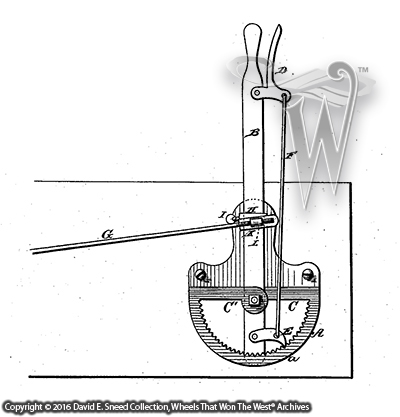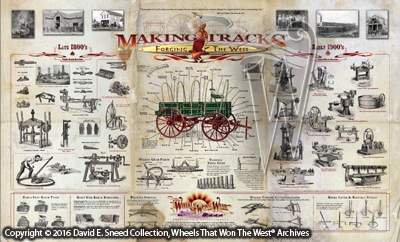Every day we come across history and, often, those encounters are taken for granted or missed altogether. When that happens, we all lose. We lose a richness and depth of culture as well as pieces of history that can never be replaced. So prevalent is transportation history in American society that we continue to see remnants of it in the words and phrases we use as well as in interstate commerce.
To that point, our Wheels That Won The West® Archives aren't just devoted to collecting and storing history but to uncovering and sharing it. (And congrats to all of you reading this that do the same. From school visits and historical presentations to published works and special events, your work is a valuable and essential part of preserving our past) Likewise, we're committed to digging for and discovering new details that help us better appreciate our first transportation industry. Understanding those all-but-lost inner workings of the old trade have a way of growing our respect for the period vehicles while allowing us to pass along a more vivid heritage to future generations. It's a point that was recently reinforced to me through some of our research.
Many are likely aware of a wagon brand by the name of Buerkens. The company was located in Pella, Iowa and dates its beginnings to the mid-1860s. Not long after moving to Pella from Burlington, Iowa, it seems the firm's founder, Barney Buerkens, struck up a deal with James Sexton. At the time, Sexton was a blacksmith and Buerkens needed someone to help fabricate the metalwork for his wagons. As time wenton, Mr. Sexton became something of an inventor with at least six patents awarded to him between 1869 and 1880. He was even purported to have built the first bicycle in Iowa during the 1860s.
 |
| This Sexton brake ratchet image was part of an improved patent application filed in 1879. The original concept was submitted by J.B. Sexton in 1876. |
Two of the patents awarded to J.B.Sexton dealt with a wagon brake lever that was commonly referred to as the Sexton or Pella brake ratchet. The design dates to as early as the mid-1870s and was sold by the thousands upon thousands. The unique part of the configuration was that, instead of a ratchet and pawl being located on top of the brake bracket, it was on the bottom, below the pivot point. This adjustable, self-locking design was easy to operate, allowing the brake to maintain consistent pressure without constant oversight and correction. The design was so prevalent that it's still fairly common to run across them on antique wagons today.
So, other than locating the information, how does all of this tie into our files? As many know, just over a decade ago, we introduced a limited edition print entitled, "Making Tracks." While preparing materials for the creation of the print, we reviewed a considerable number of early sales pieces for wagons and decided to include a few of the more popular brake ratchet designs as part of the artwork. Among the brake concepts shown in the print is the Sexton. At the time, I didn't know that the inventor of the ratchet was once a partner of sorts in the production of Buerkens wagons. Nonetheless, it's interesting to see how so much history continues to overlap. As we might say today - 'It's a small world.'

This exclusive, limited edition print features wagon-making gear and heavy vehicle accessories common in the late 1800s and early 1900s.
For the record, identifying a particular brake style on a wagon does not necessarily tell us anything about the wagon -brand identity or otherwise. Why? Because these parts were (and still are) often re-purposed and moved to vehicles they did not originate with. Additionally, most of the brakes used on early wagons were not proprietary designs. In other words, the configurations were not necessarily exclusive to a particular brand. That said, "sometimes" a brake can be helpful in pinpointing details associated with a specific vehicle. Even so, it often requires a good bit of knowledge about the vehicle's timeframe of manufacture as well as other considerations to know what any element on these works is actually saying.
One thing's for sure, when you see a proper noun added as a descriptive to an early vehicle feature, it's time to take note as there is more rich history just waiting to be shared. Just like the "Sexton" brake, whether you're talking about Sandage skeins, Concord coaches, Oregon brakes, or Sarven, Warner, or Archibald hubs, there are a number of early vehicle features named after their inventors or locations of origin. Understanding that truth can help lead to the discovery of even more history while reinforcing the rich past carried by an old set of wheels.
Please Note: As with each of our blog writings, all imagery and text is copyrighted with All Rights Reserved. The material may not be broadcast, published, rewritten, or redistributed without prior written permission from David E. Sneed, Wheels That Won The West® Archives.